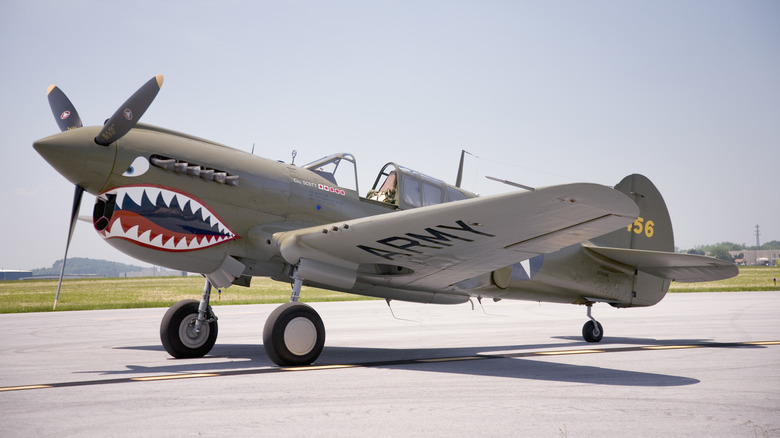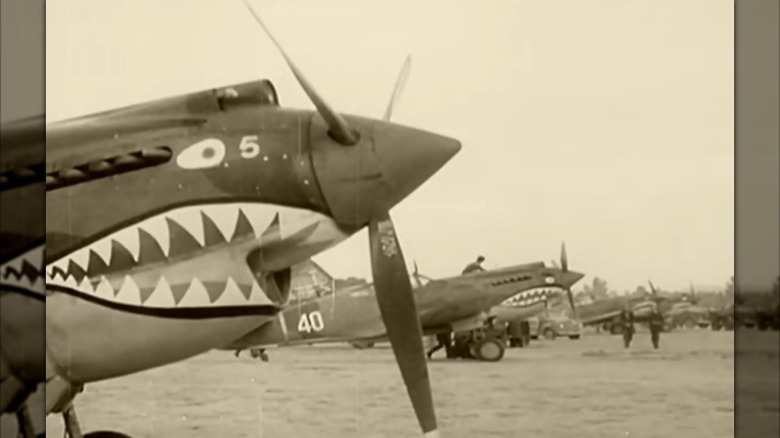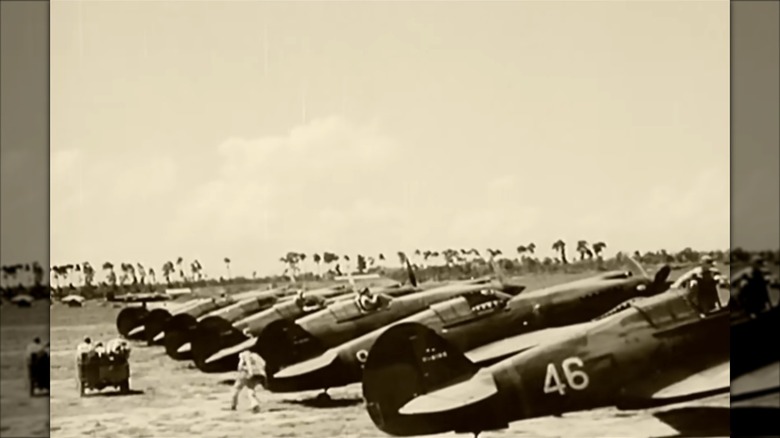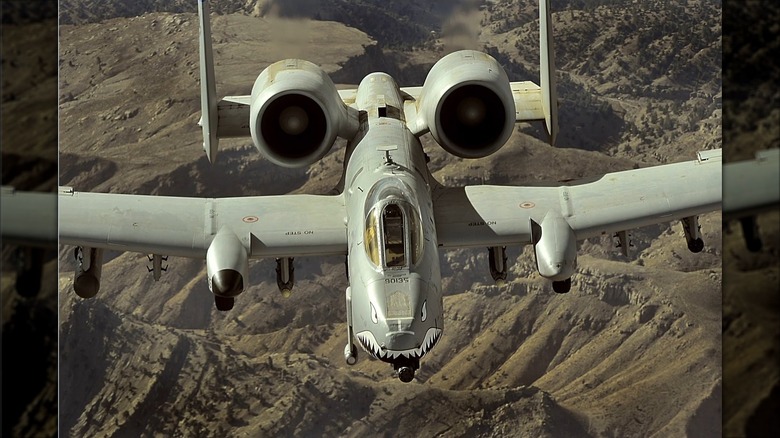Why Do Some Military Aircraft Have A Shark Painted On Them?
Psychological warfare is a tool used by armed forces to discourage their enemy, and break their resolve for fighting. It's a tactic recorded as early as ancient Rome, where members of the Legion would intimidate their adversaries by hitting their swords against their shields repeatedly in unison.
Fast forward to the 20th century, when the group known as the Flying Tigers painted the front of one of the top WWII fighter aircraft, the Curtiss P-40, to look like a shark with a gaping mouth. With several pointed teeth and glaring eyes, it gave the fighter planes an aggressive, frightening appearance, meant to instill fear. Even though World War II accelerated computer technology beyond anything that was previously possible, sometimes a low-tech approach to fighting the enemy that includes an intimidating paint job can prove effective in a whole different way.
Although the Flying Tigers are most strongly associated with the shark nose design, they weren't actually the first to paint the nose of their aircraft with eyes and a mouth. There were much earlier examples going back to World War I, where some German biplane bombers included a shark design, among others.
Who were the Flying Tigers?
Prior to the U.S. entering World War II, a small detachment of pilots from the Air Force, Army, Marine Corps, and Navy formed the American Volunteer Group in the summer of 1941. This was a way to aid China, which had been attacked by Japan. These pilots flew P-40 fighter planes and became known as the Flying Tigers due in part to the famous tiger shark paint scheme along the nose. However, the nickname also stems from their official emblem depicting a tiger, which holds special significance as China's national emblem was also of a tiger.
The Flying Tigers wouldn't see combat until Dec. 20, 1941, and would be disbanded by the summer of 1942. However, even though their time in the war was short, they managed to eradicate 296 Japanese planes in Burma and China while losing just four of their own planes, making a notable difference. News reports would tell U.S. audiences tales of the Flying Tigers, and their popularity grew.
What gave the Flying Tigers such a fierce reputation?
In 1941, Japan's forces were better outfitted than China's, and much larger, too, making them seem invincible. So, when U.S. military veteran pilots formed the American Volunteer Group and began incorporating unconventional combat methods, they quickly became a critical thorn in Japan's side. Not only were the Flying Tigers expert pilots, but due to their small numbers, they could mobilize quickly, taking advantage of opportunities to attack Japanese land and air forces.
The victories of the Flying Tigers provided hope in a time when the world looked bleak, especially for the U.S. following the attack on Pearl Harbor. David Lee (Tex) Hill, a member of the Flying Tigers, told the Los Angeles Times in 1991, "We have a record that is second to none. Nobody will ever match that again: 296 to 4." These figures are especially impressive considering the Flying Tigers' P-40 planes were outdated compared to the likes of Japan's Mitsubishi A6M Zero, one of the most legendary planes of WW2.
The shark-mouth design has appeared in several major conflicts
While the Flying Tigers are one of the best-known examples of aircraft exhibiting the shark mouth, there are countless other cases, from World War I all the way to today. Among the first military aircraft to use the shark design were Germany's Roland C.II planes, which flew in 1916, a few years after the start of World War I. On the other side in the conflict, Britain's Royal Air Force started using it toward the end of the war on some of its Sopwith Dolphin fighter planes.
During World War II, the Luftwaffe's BF 110 aircraft and ME-110 fighter planes included the iconic shark, with the Royal Air Force then incorporating it on its P-40 fighter planes in North Africa. The shark continued to makes appearances in later conflicts such as the Korean War, when it was featured on the F-51D Mustang. The Vietnam War even included several examples of the shark mouth displayed on aircraft like the F-4E and C-130, among many others.
In even later appearances, the now-legendary shark art on the nose was spotted on some of the U.S. Air Force's F-15 Eagle fighter jets in the early 2000s. These jets flew in Operation Enduring Freedom, a conflict that took place in Afghanistan. And the A-10 "Warthog" Thunderbolt II attack aircraft flown by the Air Force's 74th, 75th, and 76th fighter squadrons still include a shark mouth today, in honor of the Flying Tigers.



